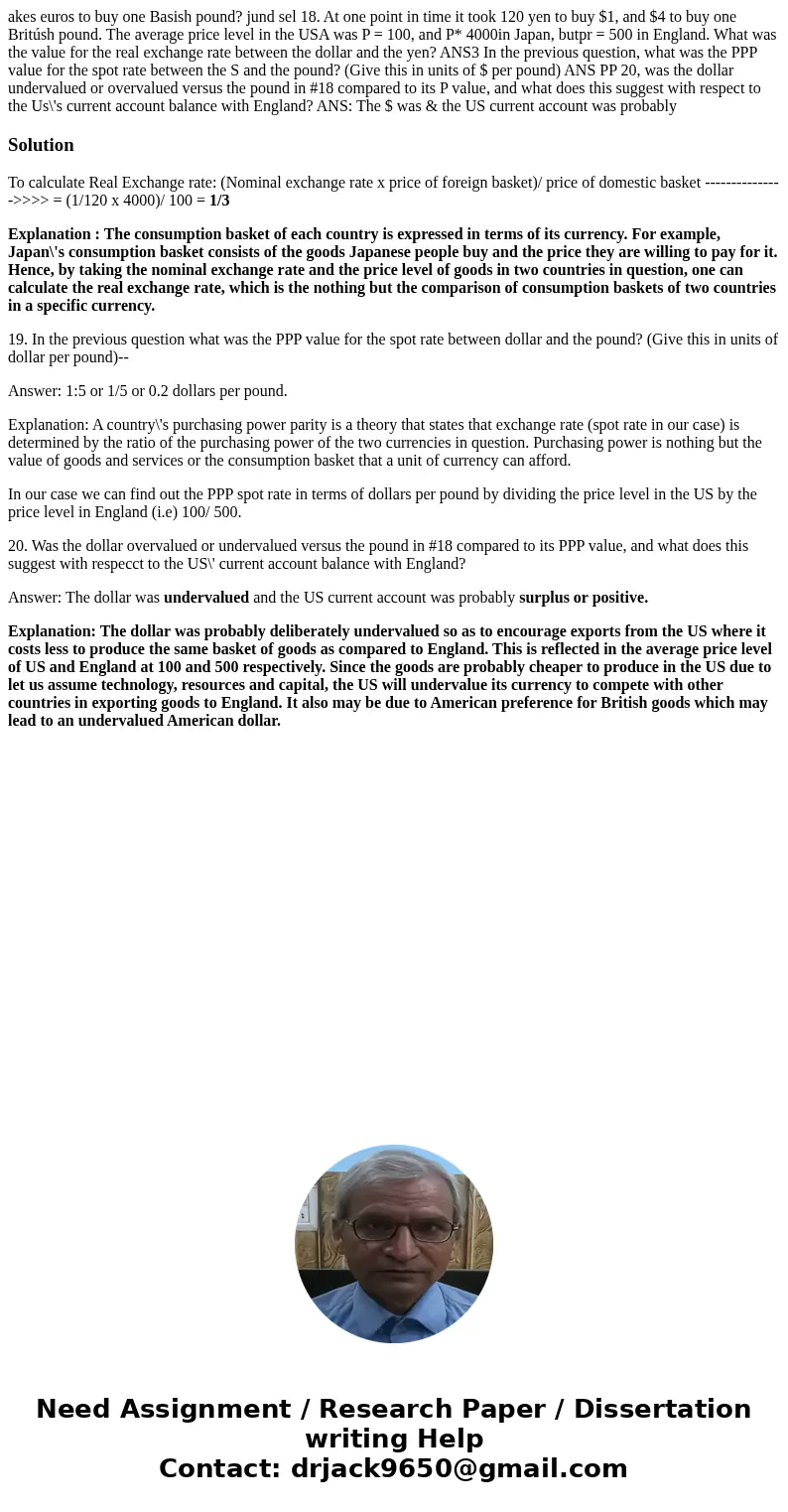akes euros to buy one Basish pound jund sel 18 At one point
Solution
To calculate Real Exchange rate: (Nominal exchange rate x price of foreign basket)/ price of domestic basket --------------->>>> = (1/120 x 4000)/ 100 = 1/3
Explanation : The consumption basket of each country is expressed in terms of its currency. For example, Japan\'s consumption basket consists of the goods Japanese people buy and the price they are willing to pay for it. Hence, by taking the nominal exchange rate and the price level of goods in two countries in question, one can calculate the real exchange rate, which is the nothing but the comparison of consumption baskets of two countries in a specific currency.
19. In the previous question what was the PPP value for the spot rate between dollar and the pound? (Give this in units of dollar per pound)--
Answer: 1:5 or 1/5 or 0.2 dollars per pound.
Explanation: A country\'s purchasing power parity is a theory that states that exchange rate (spot rate in our case) is determined by the ratio of the purchasing power of the two currencies in question. Purchasing power is nothing but the value of goods and services or the consumption basket that a unit of currency can afford.
In our case we can find out the PPP spot rate in terms of dollars per pound by dividing the price level in the US by the price level in England (i.e) 100/ 500.
20. Was the dollar overvalued or undervalued versus the pound in #18 compared to its PPP value, and what does this suggest with respecct to the US\' current account balance with England?
Answer: The dollar was undervalued and the US current account was probably surplus or positive.
Explanation: The dollar was probably deliberately undervalued so as to encourage exports from the US where it costs less to produce the same basket of goods as compared to England. This is reflected in the average price level of US and England at 100 and 500 respectively. Since the goods are probably cheaper to produce in the US due to let us assume technology, resources and capital, the US will undervalue its currency to compete with other countries in exporting goods to England. It also may be due to American preference for British goods which may lead to an undervalued American dollar.

 Homework Sourse
Homework Sourse